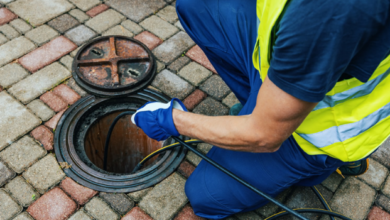How to Prevent Water Damage Before It Causes Serious Problems

Water damage can lead to significant structural issues and costly repairs if not addressed promptly. Implementing a preventive strategy is essential for homeowners looking to safeguard their properties. Regular maintenance checks, identifying common sources of leaks, and investing in quality materials are critical steps in this process. Furthermore, staying vigilant about weather conditions can play a pivotal role in preventing flooding. However, understanding the nuances of each preventive measure and how they interconnect can make all the difference in effective water damage prevention. What strategies have proven most effective in your experience?
Regular Maintenance Checks
To effectively mitigate the risk of water damage, conducting regular maintenance checks is imperative.
Routine inspections allow property owners to identify potential vulnerabilities, ensuring that preventive measures are implemented proactively.
This systematic approach not only safeguards structures from moisture-related issues but also enhances long-term property value.
Emphasizing diligence in maintenance fosters a resilient environment, empowering owners to preserve their investments effectively.
See also: Instagram Bio Hacks: How to Make a Lasting First Impression
Identify Common Sources
Identifying common sources of water damage is a vital step in safeguarding properties from moisture intrusion.
Key areas include leaky pipes, which can lead to extensive structural damage if undetected, and the necessity of regular roof inspections to prevent water infiltration from damaged shingles or flashing.
Proactively addressing these issues not only protects property integrity but also ensures long-term financial freedom from costly repairs.
Invest in Quality Materials
How can investing in quality materials significantly reduce the risk of water damage?
Utilizing water resistant materials and ensuring durable construction are critical strategies in safeguarding your property. High-quality roofing, siding, and plumbing components not only enhance resilience against moisture intrusion but also minimize long-term repair costs.
Prioritizing such investments fosters an environment of freedom from the concerns associated with potential water damage.
Monitor Weather Conditions
Staying informed about weather conditions is essential for effective water damage prevention.
Utilizing advanced weather forecasting tools allows homeowners to anticipate severe weather events. By monitoring alerts and updates, individuals can enhance storm preparedness, implementing necessary measures such as securing drainage systems and reinforcing vulnerable areas.
This proactive approach minimizes potential water damage, safeguarding both property and peace of mind during unpredictable weather patterns.
Conclusion
In conclusion, proactive measures are essential for preventing water damage and preserving the integrity of properties. Regular maintenance checks, identification of common sources, investment in quality materials, and vigilant monitoring of weather conditions collectively form a comprehensive strategy. As the adage goes, “An ounce of prevention is worth a pound of cure.” By implementing these practices, homeowners can effectively safeguard their investments and minimize the risk of costly repairs associated with water damage.





